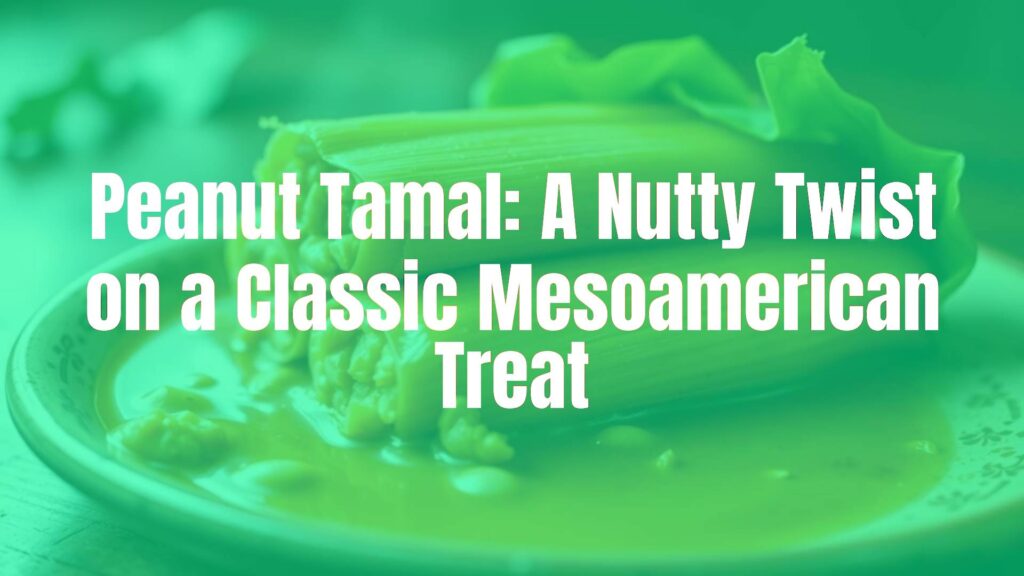Discovering the Peanut Tamal
The peanut tamal is a distinctive variation of the traditional tamal that highlights the rich, earthy flavor of peanuts. This unique offering blends the fundamental elements of classic tamales—masa and a steamed wrap in corn husks or banana leaves—with the unmistakable taste and texture of ground peanuts or peanut butter. Celebrated for its sweet-savory profile and creamy consistency, the peanut tamal holds a special place in the culinary traditions of certain regions, especially in Central and Southern Mexico.
Historical and Regional Roots
While tamales have an ancient lineage that dates back to pre-Columbian civilizations, the peanut tamal is most closely associated with indigenous and Afro-Mexican communities in Oaxaca and Veracruz. The introduction of peanuts to Mesoamerica occurred after Spanish colonization, but they were quickly adopted and integrated into regional cuisine, leading to creative uses such as the peanut tamal. Today, it is cherished during local festivals, family gatherings, and religious celebrations, embodying a bridge between old traditions and new influences.
Core Ingredients and Preparation Methods
The essence of a peanut tamal lies in a well-balanced mixture of masa (corn dough), finely ground roasted peanuts, and a touch of sweetener—often piloncillo (Mexican unrefined cane sugar) or brown sugar. Some versions incorporate whole peanuts or a swirl of peanut butter for added texture. The masa mixture is sometimes enriched with butter or lard for a more decadent mouthfeel. The filling, if any, may feature raisins, chocolate, or a hint of cinnamon, complementing the rich nuttiness. The assembled tamales are wrapped in soaked corn husks or banana leaves and then steamed until they achieve a tender, moist texture.
Flavor, Texture, and Appearance
Characterized by its golden hue and slightly crumbly, yet moist interior, the peanut tamal delivers a comforting aroma with pronounced nutty notes. The flavor can range from subtly sweet to richly dessert-like, depending on the region and the amount of sweetener added. Its texture is enhanced by the creaminess of the peanuts, while occasional bits of whole nuts provide a delightful crunch. The banana leaf version imparts a herbaceous undertone and silkier bite, whereas corn husks lend a more traditional, rustic finish.
Common Variations and Ingredient Adaptations
There are numerous ways to personalize peanut tamales. Some cooks add dried fruits such as raisins or prunes, or infuse the masa with spices like cinnamon or anise for added complexity. For a contemporary touch, vegan adaptations using vegetable shortening instead of lard are becoming popular. Chocolate chips or shavings may be mixed into the dough to create a dessert tamal with a Mexican twist. In some households, fillings of fruit preserves, cajeta (goat’s milk caramel), or shredded coconut are folded in for extra sweetness and variety.
Serving and Pairing Suggestions
Peanut tamales are commonly enjoyed as a mid-morning or afternoon treat, still warm from the steamer, and sometimes dusted with powdered sugar. They pair beautifully with a hot cup of atole, champurrado (chocolate masa drink), or coffee, particularly when served as a sweet snack or breakfast. For a more savory experience, some prefer them with a mild salsa or a dollop of crema to balance the richness.
Conclusion
The peanut tamal stands as a compelling testament to the adaptability and creativity within Mexico’s culinary landscape. Its harmonious blend of familiar flavors and intriguing textures offers a delicious reinterpretation of the tamal, making it a favorite at special occasions and everyday meals alike.

